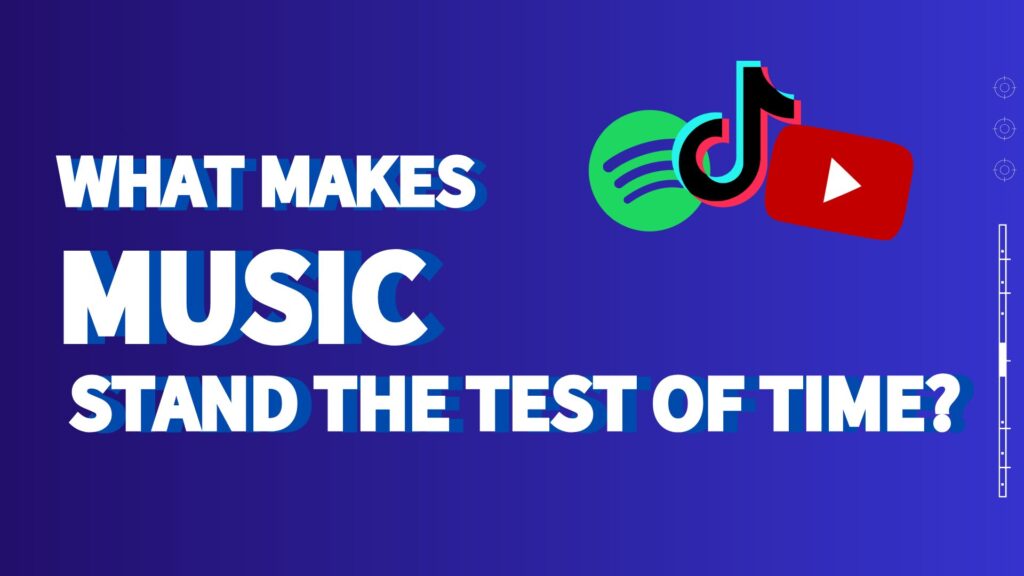
In 2024, the way music is listened to has completely changed.
Songs that buzz on TikTok are forgotten a few weeks later; Spotify’s recommendations evolve, but not all songs are played. Despite being told that albums are “over”, some artists are still using them as a weapon.
Music consumption is said to have “gone digital”, but the reality is that there is a growing divide between songs that “continue to be listened to” and those that “end up being consumed”.
This contradiction is unravelled with data and hints for music marketing in 2024 and beyond.
⸻
Buzz on TikTok is “just consumed” – the problem of not creating fans
TikTok is an “ignition point” but lacks “staying power”
It is true that TikTok is a music ignition point, but the songs that buzz here become long hits as is However, it does not necessarily mean that the songs that buzz on TikTok become long-lasting hits. In fact, data shows that the more buzz a song gets on TikTok, the higher the risk of it being “consumed” and ending up as a hit.
Data 1: Lifespan of TikTok viral songs
– Over 70% of songs buzzed on TikTok disappear from Spotify’s top charts within a month (Source: Chartmetric).
– On the other hand, songs that spread via playlists and radio tend to stay in the charts for 2-3 months or more.
Specific examples
✔ Oliver Anthony – ‘Rich Men North of Richmond’ (2023)
The song spread rapidly via TikTok and reached No. 1 in the US shortly after its release. However, it then rapidly charted down and within a few months the frequency with which it was mentioned dropped drastically.
✔ Noah Kahan – ‘Stick Season’ (2022-2023)
Although the buzz originated on TikTok radio and playlists, the whole album became a long hit as it started to flow to be listened to.
Having a strategy to “stay” rather than “buzz” will make a big difference to the outcome.
Future strategies
✔ Be aware of long hit venues (radio, festivals, playlists), not just TikTok.
✔ Prepare content that “makes people want to dig deeper” after a buzz (behind-the-scenes of music videos, artist stories).
✔ Create mechanisms to increase contact with fans (social networking exchanges, collectible merchandise development).
⸻
Spotify recommendations are not a panacea – the power of curation is being reassessed
Spotify’s recommendation algorithm is evolving. But it is not the best discovery path for all songs.
Data 2: Recommendation vs curation
– Playback via Spotify’s Discover Weekly is increasing year on year, but listener engagement is higher via playlists (Source: MIDiA Research).
– The retention rate for songs hit by personal recommendations is around 50%, whereas the retention rate for songs via editorial playlists is over 70% (Spotify for Artists).
Specific examples
✔ Ethel Cain – ‘Preacher’s Daughter’ (2022)
Spotify’s algorithms as well as curation by indie media and music journalists have supported Spread.
✔ boygenius – ‘the record’ (2023)
Algorithms as well as Zane Lowe and NPR. Curatorial support played an important role.
Algorithms are only one of the entry points. Curation by trusted “people” creates loyal listeners.
Future strategies
✔ Strengthen approach to editorial playlists.
✔ Leverage support from music media, radio and journalists.
✔ Design promotions that tell a story rather than rely on algorithms.
⸻
They say it’s the single era, but is the album really dead?
✔ Is it true that “the era of the album is over”?
It’s been a long time since people said “the era of the album is over”, but in fact there is a phenomenon that is increasing the importance of the album: the album is becoming more and more important.
Data 3: Album vs. single listening trends
✔ The number of plays per single unit has increased (+20% year-on-year).
✔ However, Spotify premium users are more likely to listen through albums.
Specific examples:
✔ Taylor Swift – ‘Midnights’ (2022)
Retained listeners for a long time, not only because of the single hit, but also because the whole album had a story to tell.
✔ SZA – ‘SOS’ (2022)
Many of the songs were buzzed about on TikTok, but the overall worldview of the album attracted fans and Maintained listenership throughout the year.
The single is ‘Entrance’. Albums are “places to come back to”.
Future strategy
✔ Separate the roles of singles and albums → Singles are spreading power, albums are brand building.
✔ Make the album an “experience” → Packaging strategy including artwork, video and extras.
✔ Use single release as a foreshadowing of the album.
⸻
Conclusion: music consumption in 2024 will go from “transient” to “return mechanism”
Buzz is no longer OK; three things are key for music to continue being heard in 2024 and beyond.
✅ Be aware of what comes next.
✅ Harness the power of curation, not just algorithms.
✅ Create a place for fans to come back to, not just singles.
Will it end up as a one-off hit or will it remain as “culture”? Being aware of this fork in the road will be the essence of music marketing in 2024.
